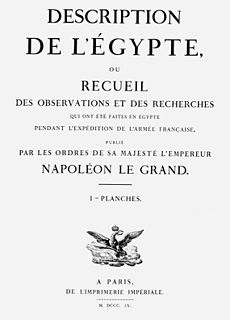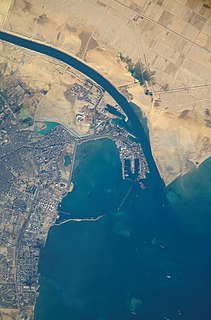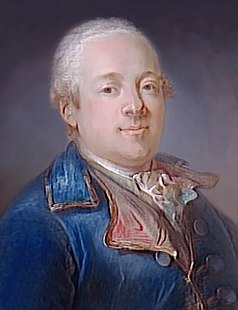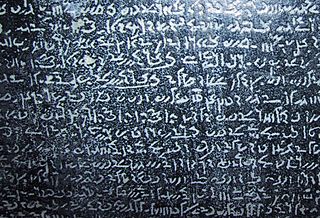This article needs additional citations for verification .(April 2012) (Learn how and when to remove this template message) |

Michel Ange Lancret (December 15, 1774 – December 17, 1807), was an engineer with the French Corps of Bridges and Roads.
He was a student of the École Polytechnique in 1794, became an Engineer of Bridges and Roads in 1797, and was a savant who accompanied Napoleon's 1798 campaign in Egypt as a member of the Commission des Sciences et des Arts, a corps of 167 technical experts.

École polytechnique is a French public institution of higher education and research in Palaiseau, a suburb southwest of Paris. It is one of the most prestigious and selective French scientific and engineering schools, called grandes écoles in French. It is known for its ingénieur polytechnicien scientific degree program which is equivalent to both a bachelor and master of science. Its entrance exam, the X-ENS exam, is renowned for its selectivity with a little over 500 admitted students out of the 53 848 students enrolled in the preparatory programs for the French scientific and engineering schools entrance exams.

Napoléon Bonaparte was a French statesman and military leader who rose to prominence during the French Revolution and led several successful campaigns during the French Revolutionary Wars. He was Emperor of the French as Napoleon I from 1804 until 1814 and again briefly in 1815 during the Hundred Days. Napoleon dominated European and global affairs for more than a decade while leading France against a series of coalitions in the Napoleonic Wars. He won most of these wars and the vast majority of his battles, building a large empire that ruled over much of continental Europe before its final collapse in 1815. He is considered one of the greatest commanders in history, and his wars and campaigns are studied at military schools worldwide. Napoleon's political and cultural legacy has endured as one of the most celebrated and controversial leaders in human history.
The Commission des Sciences et des Arts was a French scientific and artistic institute. Established on 16 March 1798, it consisted of 167 members, of which all but 16 joined Napoleon Bonaparte's conquest of Egypt and produced the Description de l'Égypte. More than half were engineers and technicians, including 21 mathematicians, 3 astronomers, 17 civil engineers, 13 naturalists and mining engineers, geographers, 3 gunpowder engineers, 4 architects, 8 artists, 10 mechanical artists, 1 sculptor, 15 interpreters, 10 men of letters, 22 printers in Latin, Greek and Arabic characters. Bonaparte organised his scientific 'corps' like an army, dividing its members into 5 categories and assigning to each member a military rank and a defined military role beyond his scientific function.
He began describing various monuments on the banks of the Nile and remnants of ancient civilization of the pharaohs. He also wrote the initial report about the Rosetta Stone that was published on behalf of Napoleon's newly founded scientific association in Cairo, the Institut d'Égypte. In the report he noted that it contained three inscriptions, the first in hieroglyphs and the third in Greek, and rightly suggesting that the three inscriptions would be versions of the same text. Lancret's report, dated 19 July 1799, [1] was read to a meeting of the Institut soon after 25 July. [2]

The Nile is a major north-flowing river in northeastern Africa, and is the longest river in Africa and in the world, though some sources cite the Amazon River as the longest. The Nile, which is about 6,650 km (4,130 mi) long, is an "international" river as its drainage basin covers eleven countries, namely, Tanzania, Uganda, Rwanda, Burundi, the Democratic Republic of the Congo, Kenya, Ethiopia, Eritrea, South Sudan, Republic of the Sudan and Egypt. In particular, the Nile is the primary water source of Egypt and Sudan.

The Rosetta Stone is a granodiorite stele, found in 1799, inscribed with three versions of a decree issued at Memphis, Egypt, in 196 BC during the Ptolemaic dynasty on behalf of King Ptolemy V. The top and middle texts are in Ancient Egyptian using hieroglyphic script and Demotic script, respectively, while the bottom is in Ancient Greek. As the decree has only minor differences between the three versions, the Rosetta Stone proved to be the key to deciphering Egyptian hieroglyphs, thereby opening a window into ancient Egyptian history.

The Institut d’Égypte or Egyptian Scientific Institute is a learned society in Cairo specializing in Egyptology. It was established in 1798 by Napoleon Bonaparte to carry out research during his Egyptian campaign and is the oldest scientific institute in Egypt. The building in which it was housed was burnt down, with the loss of many documents, during the Arab Spring unrest of 2011. It reopened in December 2012.
On his return to France he was appointed in April 1802 to become the Commissioner for what would be the Description de l'Égypte, and directed the publication from 1805.

The Description de l'Égypte was a series of publications, appearing first in 1809 and continuing until the final volume appeared in 1829, which aimed to comprehensively catalog all known aspects of ancient and modern Egypt as well as its natural history. It is the collaborative work of about 160 civilian scholars and scientists, known popularly as the savants, who accompanied Napoleon's expedition to Egypt in 1798 to 1801 as part of the French Revolutionary Wars, as well as about 2000 artists and technicians, including 400 engravers, who would later compile it into a full work.










